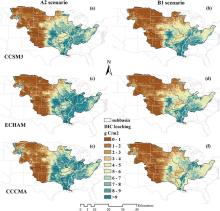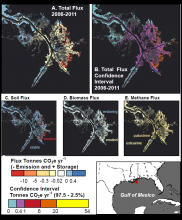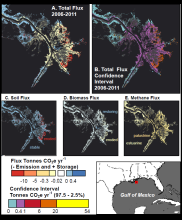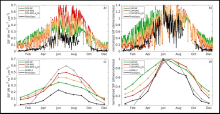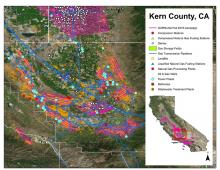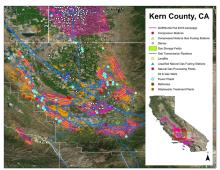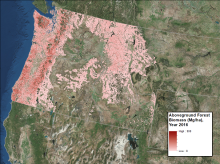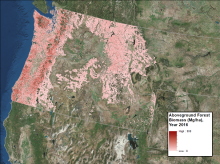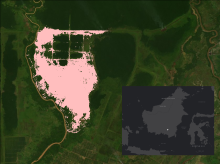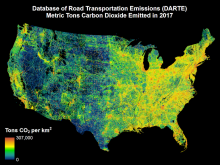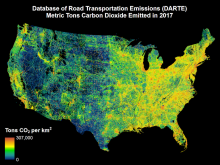New data from the Carbon Monitoring System (CMS) offers insights into how environmental factors affect the dynamics of leaching.
Historical and Future Leaching from the Mississippi River Basin
Spatial distribution of mean dissolved inorganic carbon (DIC) leaching (g c/m2/yr) in the 2090s estimated by S(ALL) simulation experiment (including future climate, elevated CO2, and land use changes). Climate change scenarios were derived from three climate models named CCSM3 (panels a and b), ECHAM (c and d), and CCCMA (e and f) under high (A2) and low (B1) emission scenarios, respectively.


